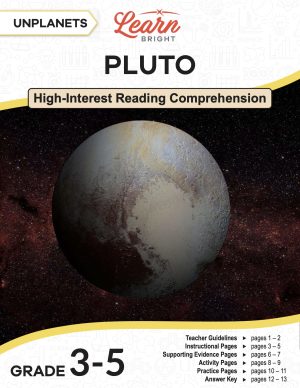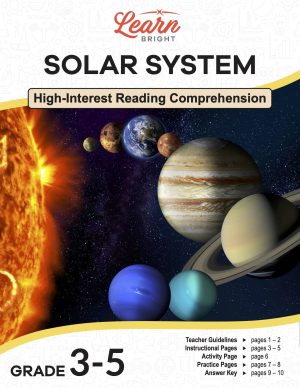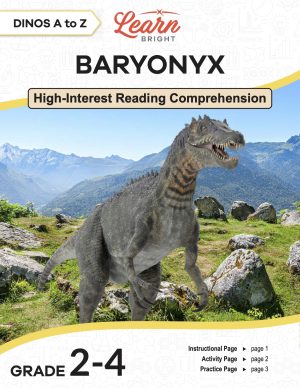Description
What our Division, No Remainders lesson plan includes
Lesson Objectives and Overview: Division, No Remainders introduces students to grouping strategies for diving whole numbers without remainders. This interactive lesson enables students to practically explore how to group objects using manipulatives and solidifies their understanding of grouping strategies for dividing whole numbers with no remainder. At the end of the lesson, students will be able to divide whole numbers with no remainders using grouping strategies. This lesson is for students in 2nd grade, 3rd grade, and 4th grade.
Classroom Procedure
Every lesson plan provides you with a classroom procedure page that outlines a step-by-step guide to follow. You do not have to follow the guide exactly. The guide helps you organize the lesson and details when to hand out worksheets. It also lists information in the blue box that you might find useful. You will find the lesson objectives, state standards, and number of class sessions the lesson should take to complete in this area. In addition, it describes the supplies you will need as well as what and how you need to prepare beforehand.
Options for Lesson
Included with this lesson is an “Options for Lesson” section that lists a number of suggestions for activities to add to the lesson or substitutions for the ones already in the lesson. One optional addition to this lesson is to have your students create their own word problems and solve them using the five strategies. To make the homework assignment more interactive, you can hang the worksheets around the room and have your students answer the problems. Finally, you can bring in real food, such as a cake, and equally divide it.
Teacher Notes
The teacher notes page includes lines that you can use to add your own notes as you’re preparing for this lesson.
DIVISION, NO REMAINDERS LESSON PLAN CONTENT PAGES
Division, No Remainders
The Division, No Remainders lesson plan includes two content pages. Division is when you share something equally or break it into parts. When working with division, it’s important to understand the vocabulary terms. In a division number sentence, the dividend is the number to be divided and the divisor is the number which divides the other number. The quotient is the number that is the answer.
You can solve division problems using five main methods. First, you can use an array, or a representation of items (like dots) which you group together using circles. Second, you can draw a literal picture of the problem. Third, you can skip count, where you count by the divisor until you reach the dividend. Fourth, you can find the multiplication fact that would make the sentence true. Fifth, you can use repeated subtraction, where you subtract the divisor from the dividend until you reach zero.
For the example problem 28 ÷ 7 = 4, we can use each of the five methods to solve. We can solve using an array, drawing the dividend (28) as dots. The divisor (7) tells us how many dots should be in each group. We would circle groups of 7 dots, for a total of 4 groups.
We could also use a picture. In this case, we’re splitting up 28 donuts into 7 boxes, so we draw 7 boxes that each have the same number of donuts in them, totaling 28. Next, we can use skip counting. We count by the divisor (7) until we reach the dividend: 7, 14, 21, 28. There are 4 total numbers so the answer is 4.
We can also use multiplication facts, finding the multiplication fact that makes the sentence true: 7 x 4 = 28 and 4 x 7 = 28. Finally, we can use repeated subtraction, subtracting the divisor from the dividend until we reach zero: 28 – 7 – 7 – 7 – 7 =0. We subtracted 7 a total of 4 times so the answer is 4.
DIVISION, NO REMAINDERS LESSON PLAN WORKSHEETS
The Division, No Remainders lesson plan includes four worksheets: an activity worksheet, a practice worksheet, a homework assignment, and a quiz. You can refer to the guide on the classroom procedure page to determine when to hand out each worksheet.
DIVISION NUMBER SENTENCE ACTIVITY WORKSHEET
For the lesson activity, students will read word problems and write a division number sentence for each. They will also draw a picture of their model for each problem.
DIVIDING INTO GROUPS PRACTICE WORKSHEET
The practice worksheet asks students to divide objects into groups of different sizes.
DIVISION, NO REMAINDERS HOMEWORK ASSIGNMENT
For the homework assignment, students will create math questions about different parts of themselves, like their age, their shoe size, and the number of letters in their name. They will also draw a picture of their face in the center of the worksheet.
QUIZ
This lesson also includes a quiz that you can use to test students’ understanding of the lesson material. For the quiz, students will use the five different division strategies to solve a word problem, showing how they used each strategy.
Worksheet Answer Keys
This lesson plan includes answer keys for the practice worksheet, the homework assignment, and the quiz. If you choose to administer the lesson pages to your students via PDF, you will need to save a new file that omits these pages. Otherwise, you can simply print out the applicable pages and keep these as reference for yourself when grading assignments.









